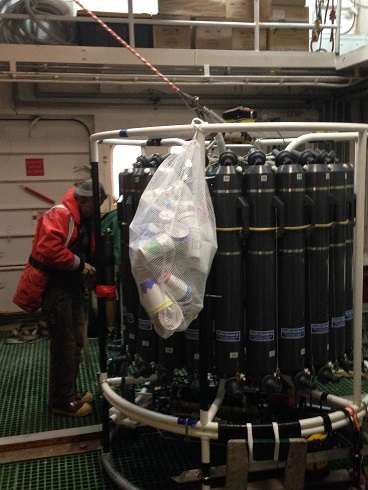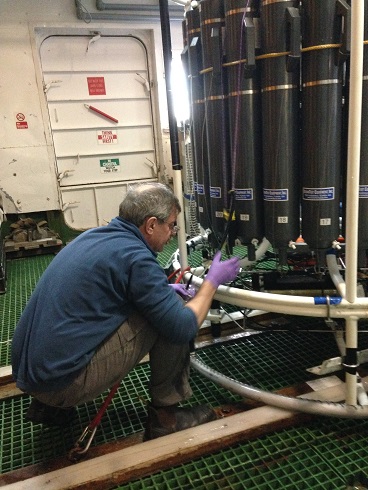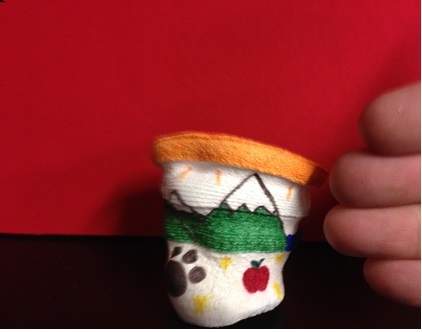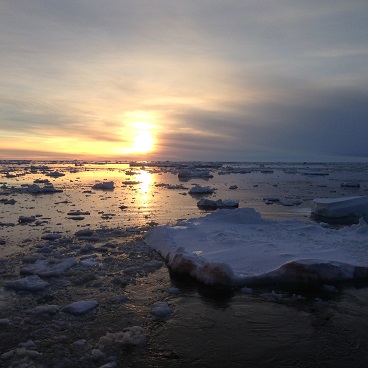We are now in the second half of the cruise. That means two weeks left of science and one week of transit back to Tasmania. But it isn't all work. We began our first competitive tournament. Basically it is Texas horseshoes with bean bags. It should be interesting on a rocking ship. It is a great way to get to know everybody better and get in a little ribbing. Everybody is trash talking. Of course it is all in good fun. We are planning one for shinny and ping pong also.
CTD's, sunsets and the incredible shrinking cup.
 A Rosette CTD and one of our bags of Styrofoam cups hitch hiking a ride to the bottom of the ocean.
A Rosette CTD and one of our bags of Styrofoam cups hitch hiking a ride to the bottom of the ocean.
The weather improved from a few days ago. The seas have calmed and the sun came out. It was time to get back to work. And because of this, today was perhaps our busiest so far. We had all kinds of deployments. Thanks to The folks in seismology who gathered information about the sea bottom and Caroline and Kathleen for creating the multibeam maps, it enabled the Primary Investigators to pinpoint their test sites. We did core samplings, moorings, yoyo cams . A yoyo cam or camera is a remote controlled device that takes a video of the life deep below the ocean floor. I wish I could attach a video with this journal
Today I thought I would talk about a rosette CTD. This piece of scientific equipment is slowly lowered to the bottom of the ocean. As it travels from depth to depth, grey tube-like bottles are remotely opened. This allows the scientists to collect water samples from the bottom to the surface. CTD stands for conductivity, temperature and depth. Essentially the depth is really measuring pressure.
 Dr. Bruce Huber is collecting water from the CTD for analysis.
Dr. Bruce Huber is collecting water from the CTD for analysis.
The samples are carefully removed for analysis. Actually there are more than 3 tests that are done on the samples. The scientists will use the data to get a clearer picture of the region's water masses. One thing they seek to locate is where warmer water may be undermining the continents ice sheets. This can result in melting and calving of the glaciers.
 This is one of the cups after being exposed to great pressure.
This is one of the cups after being exposed to great pressure.
As an outreach project for a number of schools in New York and Sydney Australia we had students and their teachers draw on Styrofoam cups. We then sent them down into the deep. The pressure compressed the "airy" cups into a much smaller version. Have you ever dived deep into a lake and felt pain in your ears? That's because of the greater pressure. Now they have a cool souvenir and hopefully will have a little more knowledge of science.
 We were treated to a great sunset after a long day.
We were treated to a great sunset after a long day.

Comments